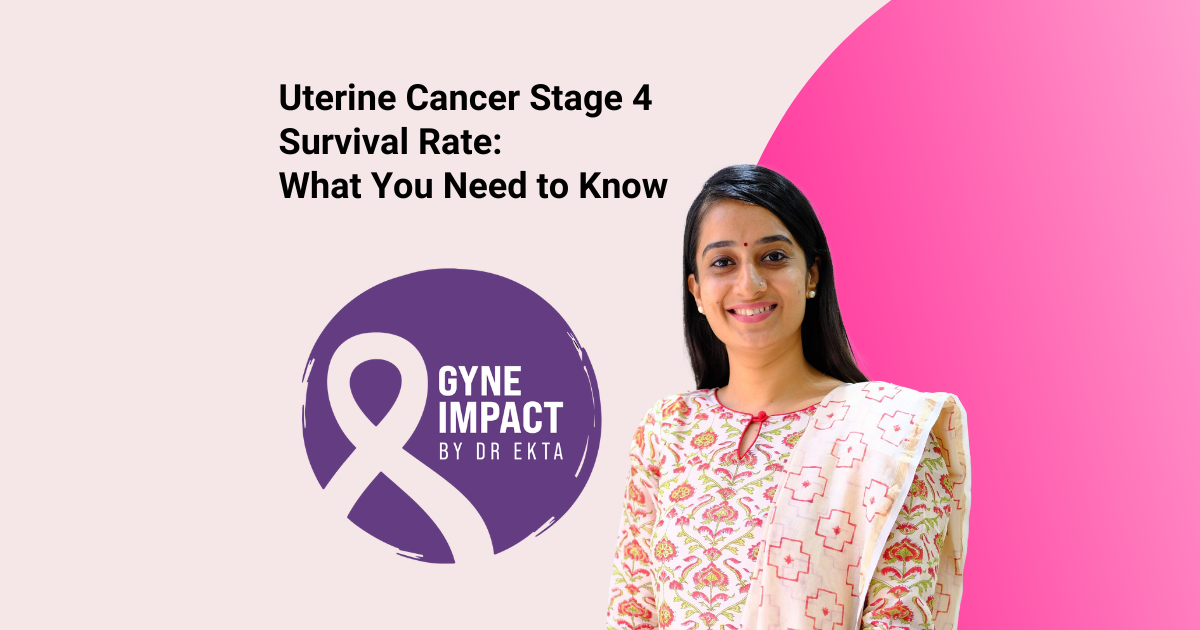As an oncologist, I have seen firsthand the profound impact a uterine cancer diagnosis can have on patients and their families. Understanding the prognosis, particularly for advanced stages, is crucial in navigating the journey ahead. The uterine cancer stage 4 survival rate is a key metric that offers insight into the disease’s progression and the effectiveness of treatments. In this blog, I will share what stage 4 uterine cancer entails, the factors affecting survival rates, treatment options, and steps patients can take to improve their prognosis.
Understanding Uterine Cancer Stage 4 Survival Rate
Uterine cancer, also known as endometrial cancer, begins in the lining of the uterus. When diagnosed at stage 4, the cancer has spread beyond the uterus to other parts of the body, such as the bladder, intestines, or distant organs like the lungs or liver. This extensive spread makes treatment more challenging and impacts the uterine cancer stage 4 survival rate significantly.
Prognosis and Survival Rates
The uterine cancer stage 4 survival rate is generally lower compared to earlier stages due to the advanced nature of the disease. According to statistics, the five-year survival rate for stage 4 uterine cancer is approximately 15-20%. This means that around 15-20% of women diagnosed with stage 4 uterine cancer are expected to live at least five years after their diagnosis. However, these numbers are averages and can vary based on individual factors.
Factors Influencing Survival Rates
Several factors can influence the uterine cancer stage 4 survival rate:
- Overall Health: Patients with better overall health tend to have better outcomes. Good health can help patients tolerate aggressive treatments better and recover more quickly.
- Age: Younger patients often have a higher survival rate compared to older patients, likely due to their generally better overall health and ability to recover from treatments.
- Tumor Characteristics: The specific characteristics of the tumor, such as its histology, grade, and molecular features, can affect how well it responds to treatment.
- Treatment Response: How well the cancer responds to initial treatments like surgery, chemotherapy, and radiation plays a crucial role in survival rates.
- Access to Care: Access to high-quality healthcare and advanced treatments can significantly impact survival. Socioeconomic factors and geographical location can influence the level of care a patient receives.
Treatment Options
While the uterine cancer stage 4 survival rate is challenging, there are several treatment options available that aim to manage symptoms, slow the progression of the disease, and improve quality of life. These include:
- Surgery: In some cases, surgery may be performed to remove as much of the tumor as possible. This is often followed by other treatments to target the remaining cancer cells.
- Chemotherapy: Chemotherapy uses powerful drugs to kill cancer cells. It is a common treatment for stage 4 uterine cancer and can be used alone or in combination with other therapies.
- Radiation Therapy: Radiation therapy uses high-energy rays to target and kill cancer cells. It may be used to shrink tumors or relieve symptoms.
- Hormone Therapy: Since some uterine cancers are hormone-sensitive, hormone therapy can be effective in slowing the growth of the cancer.
- Targeted Therapy: This treatment uses drugs designed to target specific aspects of cancer cells, such as proteins or genes that are involved in cancer growth.
- Immunotherapy: Immunotherapy helps the body’s immune system recognize and attack cancer cells. It is an emerging option that shows promise in treating various cancers, including uterine cancer.
Improving Survival Rates
While the uterine cancer stage 4 survival rate is sobering, patients can take several steps to potentially improve their prognosis:
- Early Detection: Even at advanced stages, early detection of metastasis can improve outcomes. Regular check-ups and monitoring are crucial.
- Personalized Treatment Plans: Working with a healthcare team to develop a treatment plan tailored to the specific characteristics of the cancer can lead to better outcomes.
- Clinical Trials: Participation in clinical trials can provide access to new and potentially more effective treatments that are not yet widely available.
- Support Systems: Strong support from family, friends, and support groups can improve mental and emotional health, which is vital for overall well-being.
- Healthy Lifestyle: Maintaining a healthy diet, regular exercise, and avoiding tobacco and alcohol can improve overall health and help the body cope with cancer treatments.
- Palliative Care: Palliative care focuses on relieving symptoms and improving quality of life. Integrating palliative care early in treatment can help manage pain and other symptoms effectively.
Conclusion
Understanding the uterine cancer stage 4 survival rate is essential for patients and their loved ones as they navigate this challenging diagnosis. While the statistics provide a general overview, individual outcomes can vary widely based on numerous factors. Advances in treatment options and personalized care strategies offer hope and potential for improved survival rates. I encourage patients to work closely with their healthcare providers to explore all available options, stay informed about their condition, and take proactive steps to manage their health and well-being.
In summary, the uterine cancer stage 4 survival rate is a critical piece of information that underscores the importance of early detection, personalized treatment, and comprehensive care. By staying informed and proactive, patients can better manage their condition and improve their quality of life even in the face of a stage 4 diagnosis.

